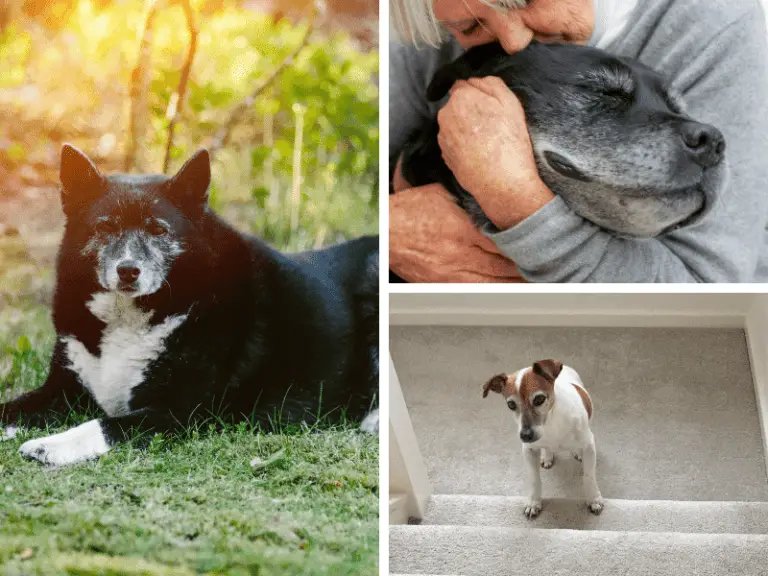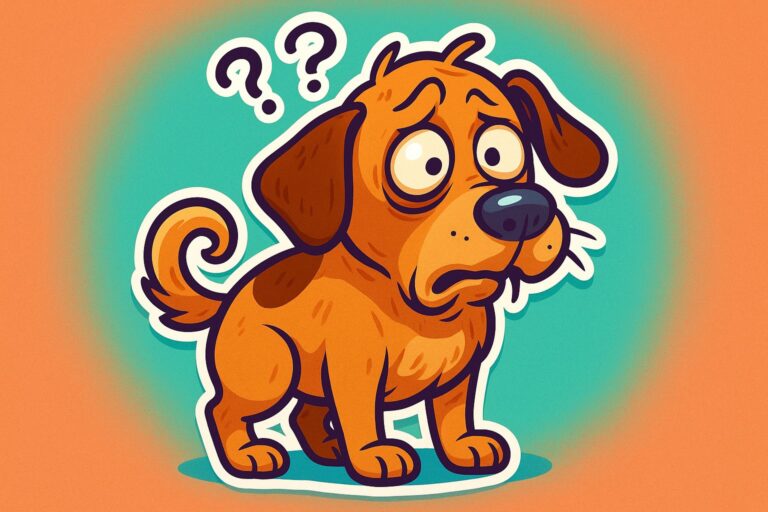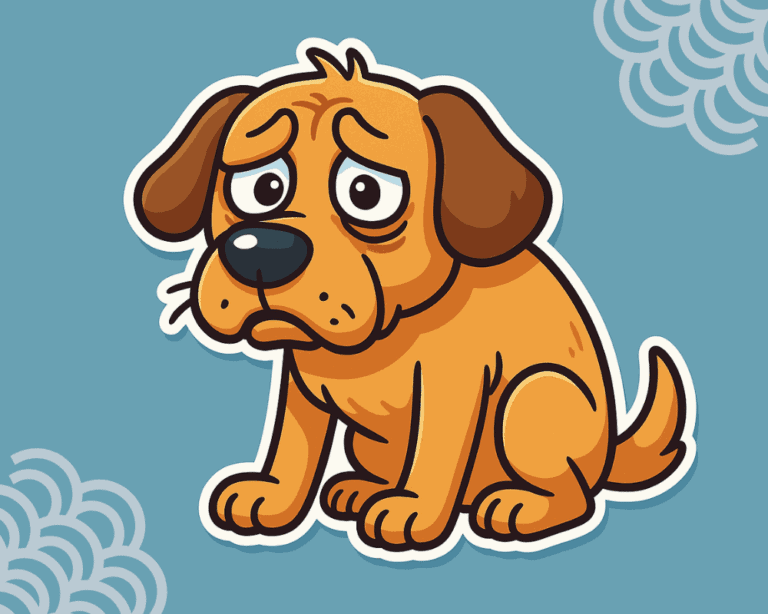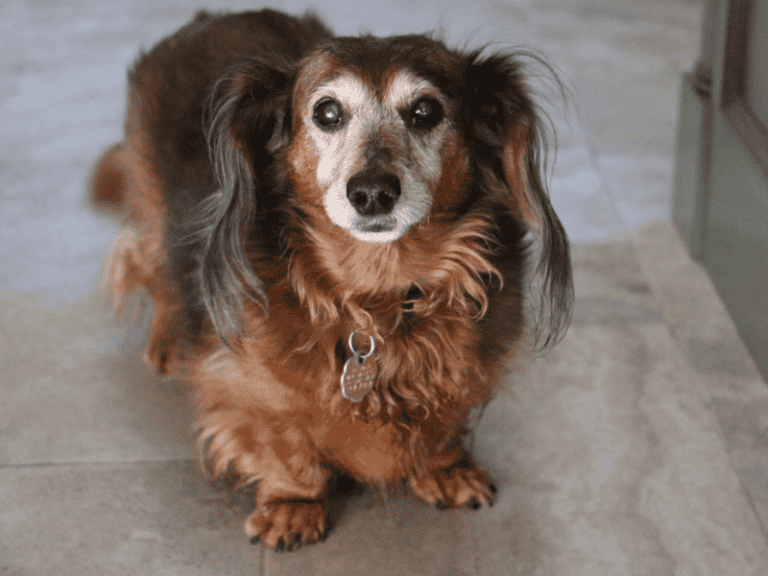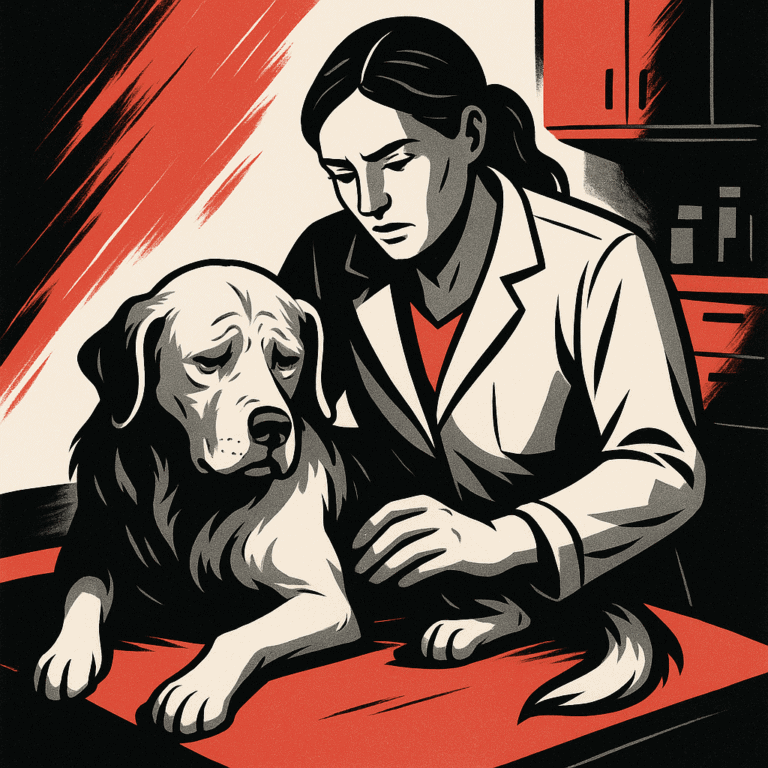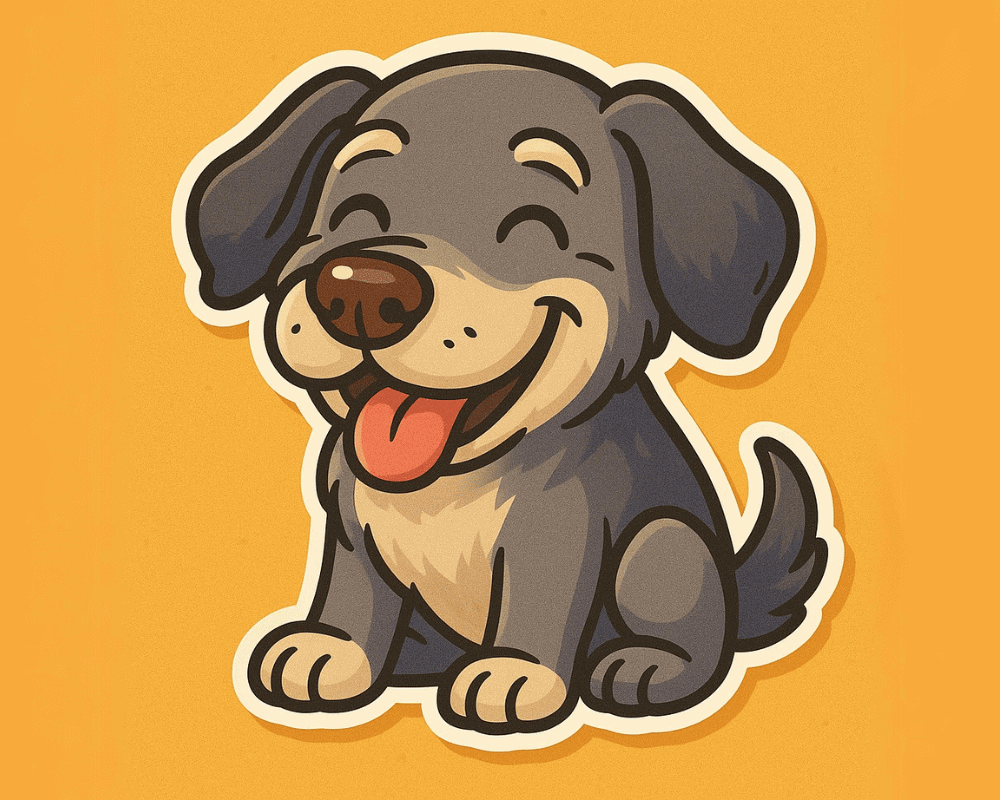10 Signs Your Dog Is Becoming a Senior
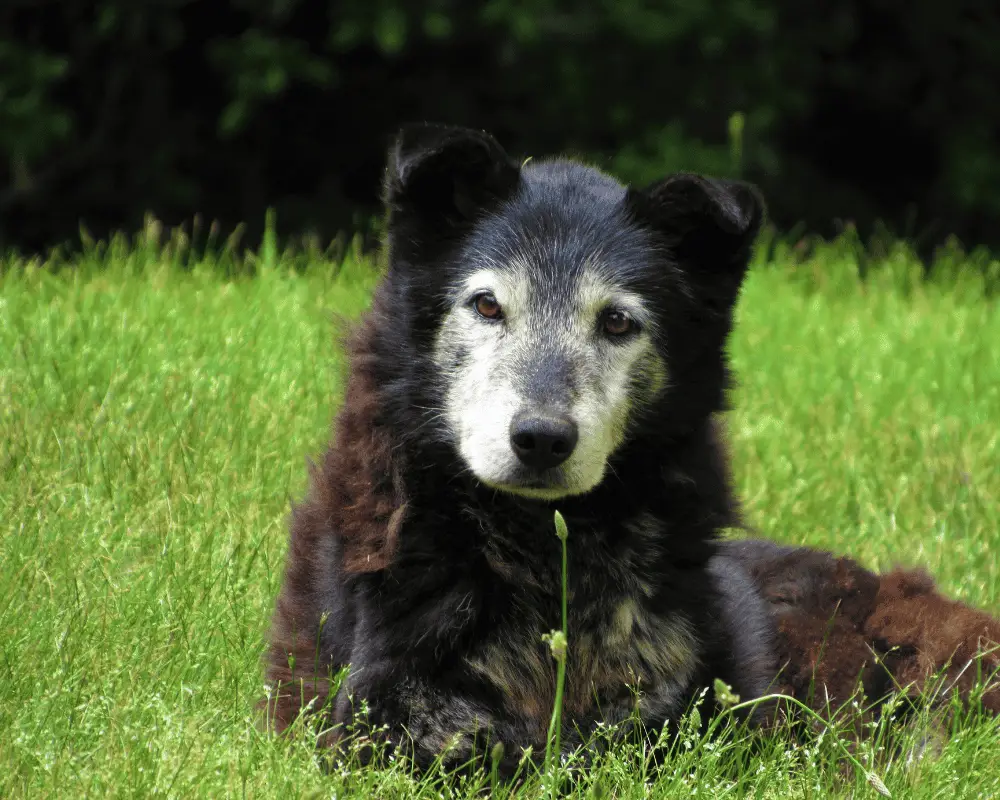
For dogs, body size is the main factor determining their expected lifespan. Smaller dogs usually live a bit longer.
Accordingly, their aging process starts later. While large breeds like Great Danes are considered seniors by the age of five, breeds like Yorkies and Dachshunds take almost twice as long to reach that stage.
However, at some point, every dog starts showing the first signs of aging. Here, you’ll find out about 10 signs that indicate your dog is becoming a senior.
#1: Gray Hair
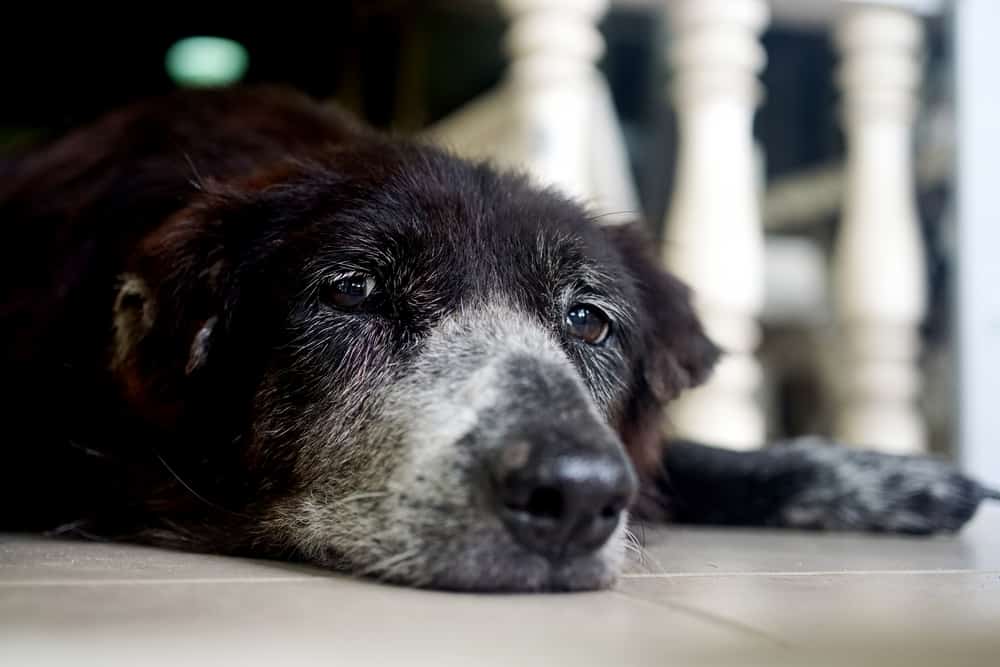
Just like people, dogs get gray hair as they age. This is caused by a lack of melanin, a pigment that gives the hair its color. As we get older, melanin decreases, which is why hair becomes lighter and eventually turns white.
Hair appears gray because it’s surrounded by other hairs that still have their normal color. By the way, researchers may have found the actual reason for this graying process.
As you can read in this study, melanocytes—cells that produce melanin—behave differently from other body cells. Instead of always maturing, sometimes they revert to an immature state where they don’t produce pigment.
Additionally, as we age, these cells move less and less. So fewer melanocytes reach the roots of the hair, where they could provide color. This is why gray hair appears as we get older.
Unlike us, though, dogs don’t get gray hair on their heads; it becomes visible on their faces. As they age, our dogs go gray around the muzzle, eyes, and ears.
For some dogs, the process starts as early as their fourth birthday. Others keep their usual coat color well into old age. Still, a few gray hairs on the face are a very reliable sign that your dog is getting older.
#2: Changes in Body Shape
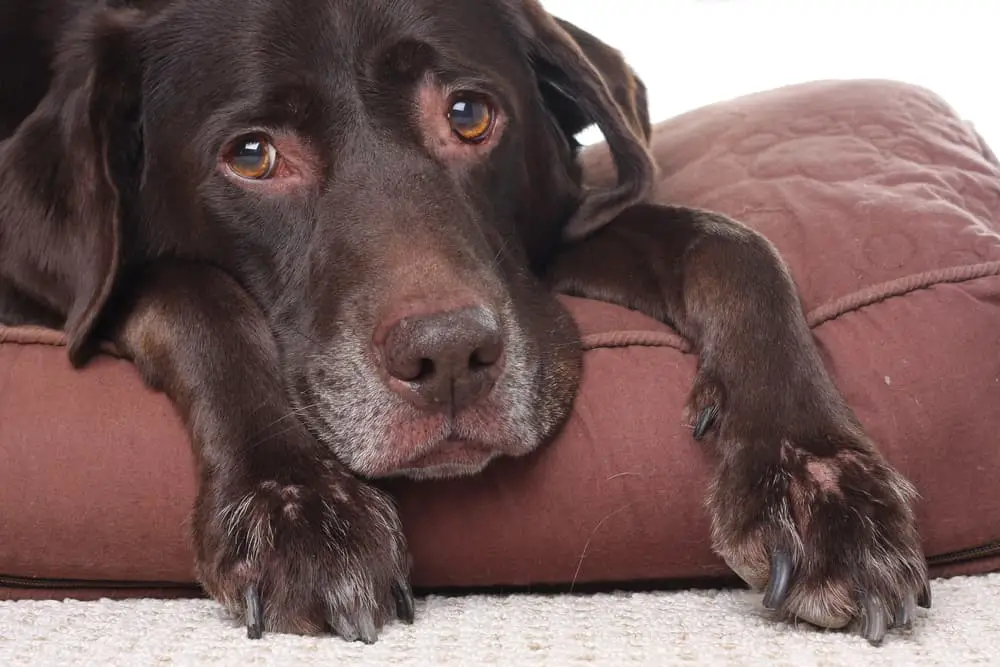
As we get older, the metabolism of our muscles changes. Muscles are built more slowly and broken down more quickly. To maintain our muscle mass, more activity is needed than just a few years earlier.
It’s very similar for our dogs. They too lose muscle mass as they age. You’ll notice this especially in large muscle groups, such as the shoulders or thighs. These areas start to look bony and uneven.
Your dog may appear thin or emaciated, even if he’s not underweight.
Age-related muscle loss is common in dogs, but it’s still a problem. The muscles are replaced by fat, which can serve as an energy reserve but doesn’t help your dog stay mobile.
This can start a downward spiral—your dog moves less because of muscle loss, which then causes even more muscle to be lost, making movement even harder.
That’s why moderate exercise and gentle sporting activity are so important for dogs, even as they get older.
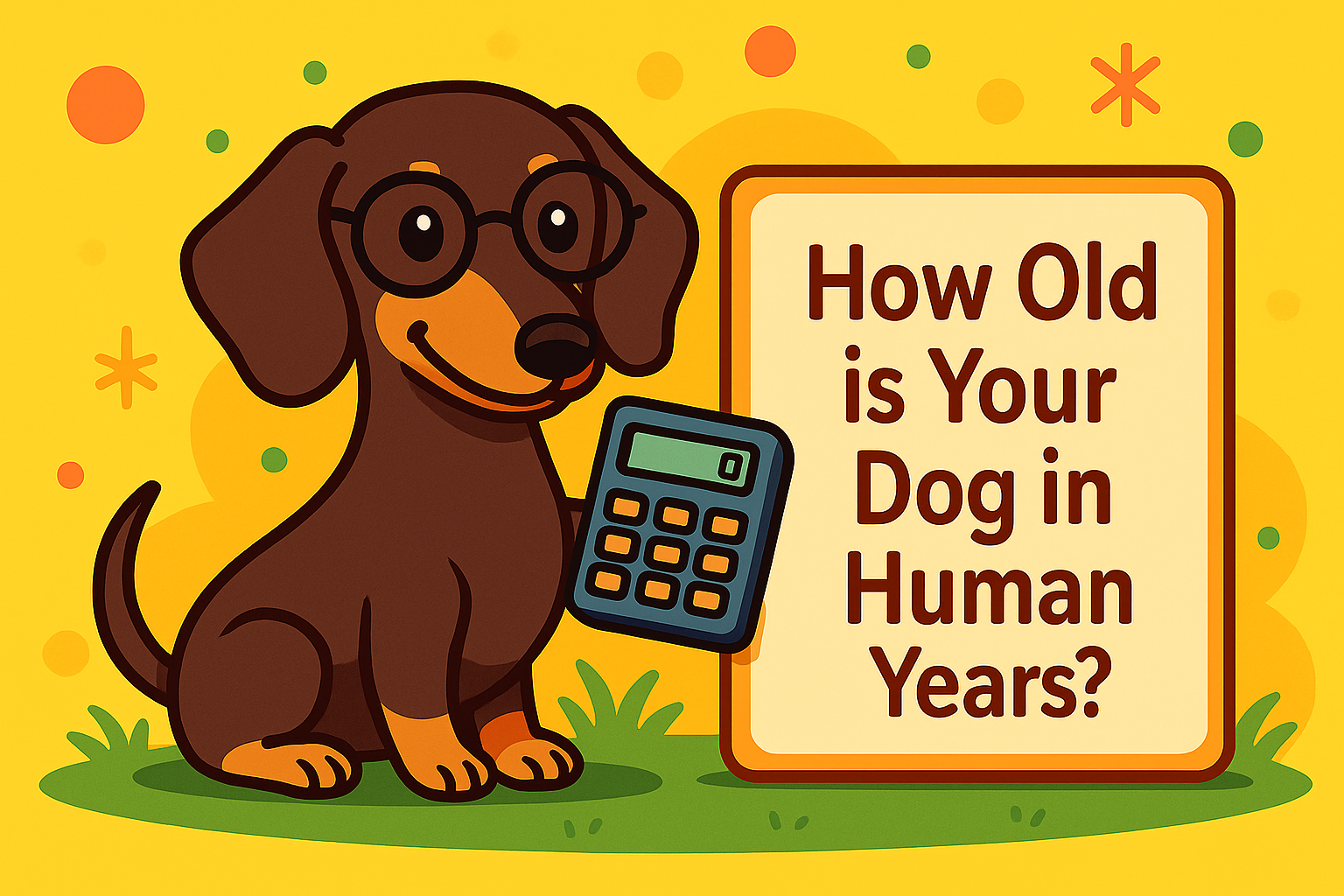
How Old Is Your Dog In Human Years? Find Out in Seconds!
Enter your dog's age and instantly see what that means in human years.
#3: Cloudy Eyes

Cataracts are a common issue in older dogs. As shown in this study, cataracts are thought to be more common in these breeds due to hereditary factors:
- Smooth Fox Terrier
- Havanese
- Bichon Frisé
- Boston Terrier
- Toy Poodle
- Australian Silky Terrier
- Toy Poodle
The cloudiness in the lens reduces your dog’s ability to see. He’ll likely move more cautiously and bump into things more often. You’ll notice the change in behavior, especially in unfamiliar surroundings.
Cataracts can also develop secondarily, triggered by another illness. Diabetes mellitus and eye infections, for instance, can lead to cloudy eyes.

Surgery is possible: the cloudy lens is removed and replaced with an artificial one. However, if the retina is also diseased, surgery may not be helpful.
Your dog should always have a thorough examination with a veterinarian specializing in eye diseases first. Cloudy eyes in dogs are not always just a sign of advanced age.
You should always have these symptoms checked out, as another condition could be behind them.
#4: Hearing Loss
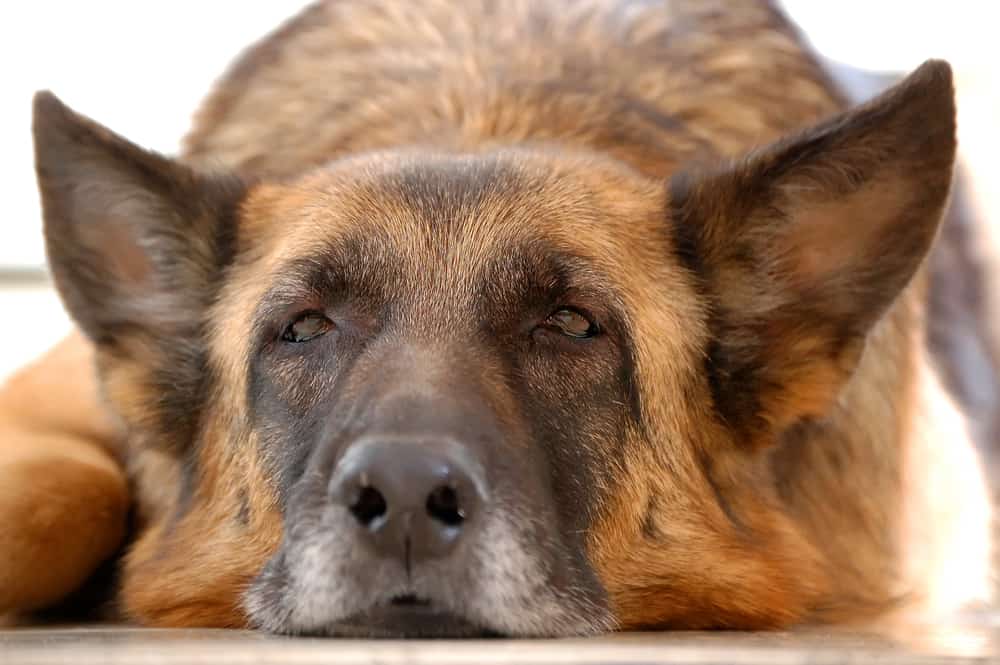
Just as vision can deteriorate with age, many dogs also lose their hearing as they get older. Many owners notice that their senior pets don’t react to familiar sounds anymore.
Don’t write off this behavior as just being stubborn. What we often interpret as willfulness is actually hearing loss. Your dog simply doesn’t understand you anymore and isn’t ignoring you on purpose.
Hearing loss is caused by the degeneration of hair cells in the ear. Normally, these cells transmit sound so the brain can process it. When they break down, they can no longer transmit sound.
You’ll recognize hearing loss if your dog doesn’t respond to sounds he knows well. Many dogs bark at the doorbell or jump up when they hear food falling into their bowl. Others are very sensitive to thunderstorms or fireworks.
If your dog no longer reacts to these things, it’s highly likely he’s suffering from hearing loss. If he’s already a bit older, his hearing loss may be age-related.
#5: Increased Susceptibility to Infections

Does your dog get sick more often and take longer to recover from infections? This could be connected to his age.
An older dog’s immune system isn’t as reliable. It takes him longer to fight off germs. That’s why even a basic cold or a stomach bug can hit him harder and take longer to get over.
According to Statista, most dog owners take their pet to the vet up to three times a year. If you’re going more often, it may be a sign that your dog’s age is catching up with him.
This doesn’t include dogs who need frequent vet visits for chronic illnesses. But if your dog has had more than three bouts of digestive or infectious issues in the last year, his age could be the culprit.
#6: More Paw Care Needed
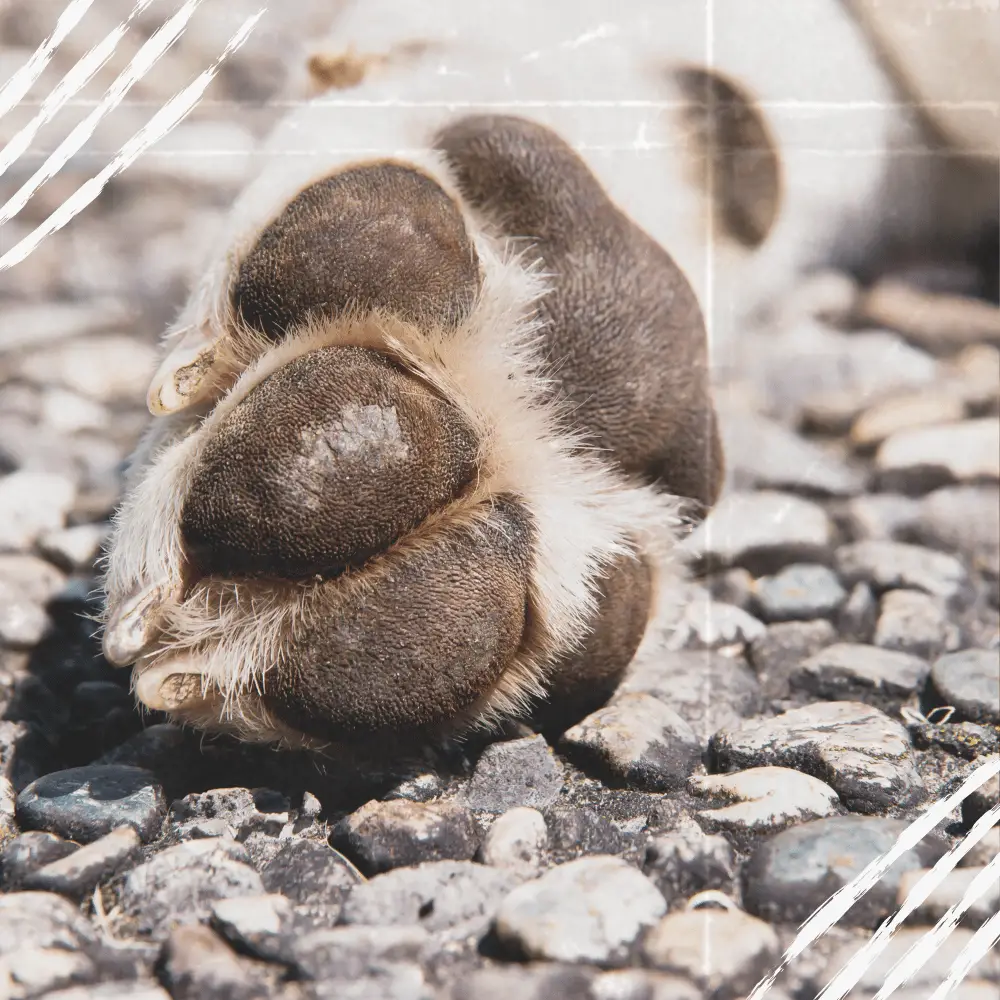
Older dogs experience changes in their skin. They produce less sebum, so their coat becomes dry and brittle. The same goes for the skin on their paw pads, which loses elasticity, making painful cracks more likely.
At the same time, their nails may seem to grow at record speed, so your dog doesn’t get a chance to wear them down naturally. If you find yourself trimming nails more often, this could be a sign your dog is officially a senior.
It’s usually said that nail growth slows down with age, but most senior dogs don’t wear down their nails as much either, since they play less and make fewer sudden stops or starts—especially on hard surfaces.
So, it just seems like the nails are growing like weeds.
#7: Back Pain
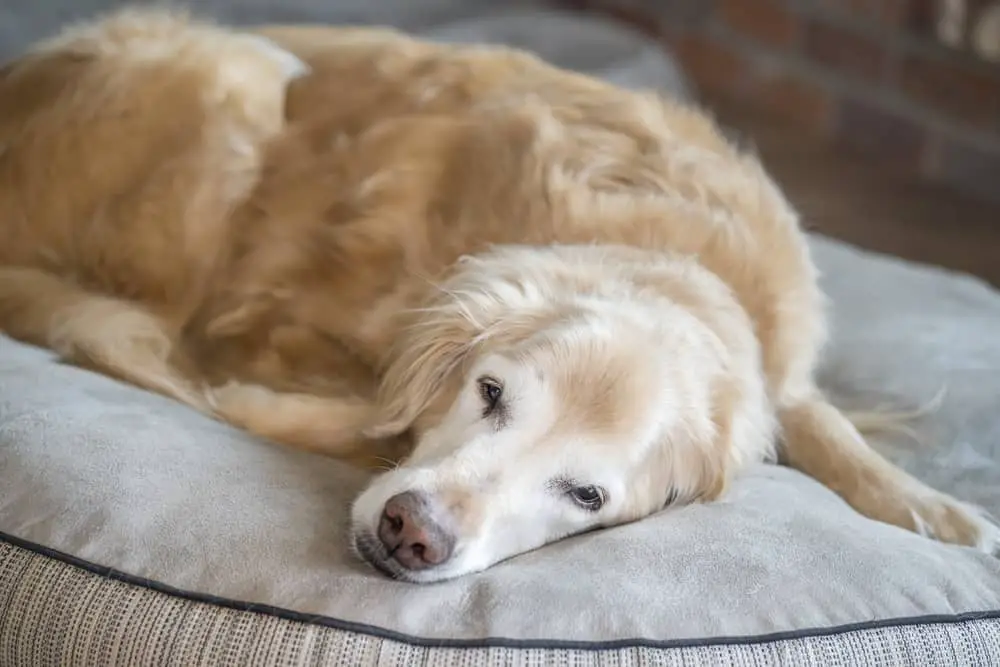
Age-related back pain is connected to muscle loss. The spine isn’t as well supported, so pain develops more easily.
Many dogs also suffer from spondylosis—bony growths on the spine caused by wear and tear. These cause pain when your dog arches his back. You can recognize back pain in your dog if you notice:
- Reluctance to move,
- a stiff gait,
- difficulty turning or lowering the head,
- licking of the limbs (pinched nerves in the back can cause limb pain), and
- refusal to lie down or get up.
Many old dogs are affected by back pain. But that doesn’t mean your dog has to just live with it! Always have him checked out by a vet to rule out nerve damage or slipped discs.
An orthopedic dog bed can really help your senior’s pain. The memory foam mattress is especially gentle on joints, letting your beloved pet get up pain-free and sleep more soundly.
#8: Increased Need for Sleep
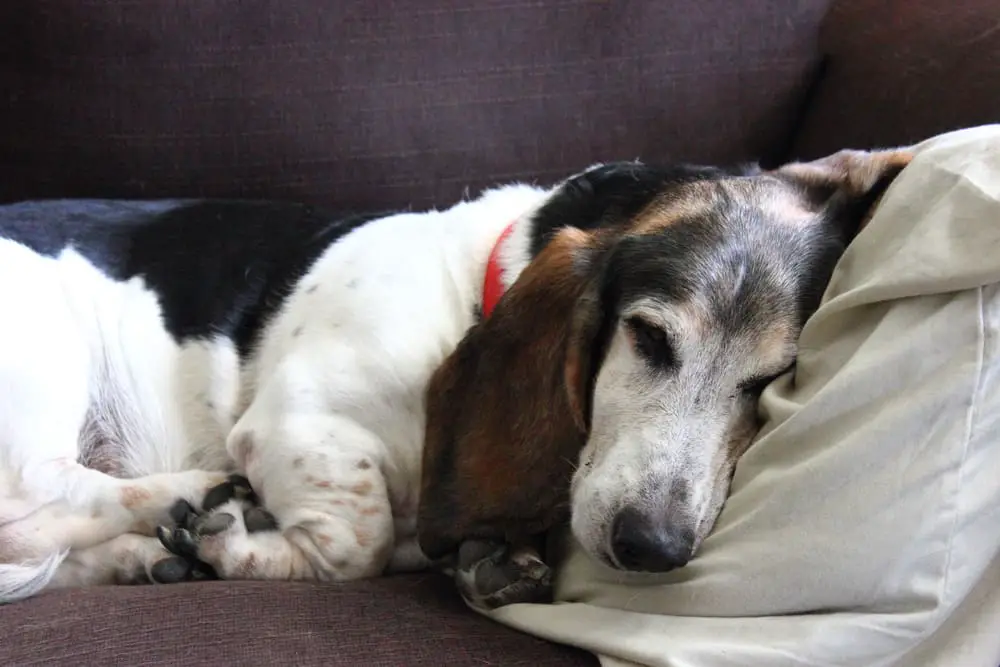
Dogs already sleep much more than humans do. As they get older, their need for sleep can increase even further. It’s not unusual for senior dogs to sleep up to 20 or even 22 hours per day.
Of course, your dog isn’t in deep sleep for those entire 22 hours—a good chunk of that time he’s just dozing or resting. The deepest, most restorative sleep still takes place at night.
This increased sleep need is partly due to muscle loss. The fewer muscles your dog has, the slower his metabolism. The combination means he tires faster.
He’s less physically capable overall and also needs more time to bounce back and recover.
Senior dogs also sleep more deeply. Part of this is due to reduced hearing, but it also helps them refill their energy reserves faster.
If you notice your dog’s stamina dropping alongside an increased need for sleep, this is another clue he’s showing his age.
Again, I highly recommend an orthopedic dog bed—it’s truly the best you can give your furry friend. >> Orthopedic Dog Bed by Knuffelwuff
#9: Sensitivity to Cold

Sensitivity to cold is a sign of aging in people as well as dogs. It’s connected to several factors. As we get older, blood circulation gets worse. This can be due to reduced heart performance or narrowing of the vessels.
Less blood flow means less warmth in the extremities, so it’s easier to get chilled. Skin also becomes thinner with age, so the body loses heat more quickly. Generally, body temperature drops a little, which also makes you more likely to feel cold.
Your dog may seek out warm places and be less willing to go outside in the cold. You can help your senior by adding an extra blanket in his bed and placing his bed somewhere warmer. Want to know the ideal room temperature for your dog? If not, you can read more here: >> What’s the Ideal Room Temperature for Dogs? Simply Explained!
Just be careful not to put his bed right next to a radiator—the air there tends to be too dry. In the winter, give him a coat and shorten those walks.
When your dog starts to feel cold can depend on more than just his fur. Size matters, too: the smaller the dog, the quicker he gets cold. For small seniors, even temperatures between 5 and 10 °C (41–50°F) can feel pretty chilly.
If you notice your dog is shivering sooner than he did last winter, it might mean he’s getting older. In that case, try taking more frequent but shorter walks with him.
#10: More Reliance on Routines
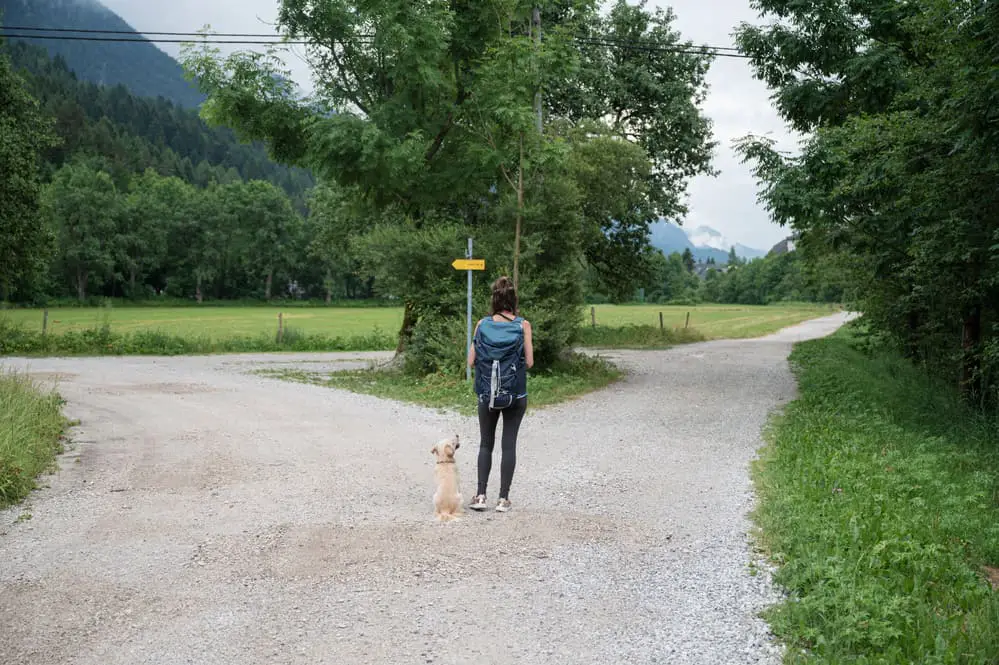
Dogs love routines and set patterns; they give structure and help your dog navigate his day. As your dog gets older, these familiar rituals become more and more important. He’s aware his body isn’t what it was—so the security routines offer becomes crucial.
This is why senior dogs often cling to their routines and can be reluctant to change. You may notice this on walks where there’s a fork in the path.
If you always go left, your senior will probably look at you with confusion if you suddenly suggest going right. A young dog is usually excited by change and happy to explore new routes.
Your senior, however, wants to stick to familiar paths. Does this remind you of your grandparents saying, “But we’ve always done it this way”? In most cases, you’ll still get your dog to follow you down the new route, but you’ll see in his eyes he’d much prefer to stick to the tried and true.
This strong attachment to routines and the familiar can signal your dog is becoming a senior. But there are also dogs who have always been routine-lovers, no matter their age.
Conclusion
As you can see, there are some very clear and some less clear signs of aging in dogs. Even though all these things are part of getting older, your dog doesn’t need to suffer or go blind as he ages.
Now is the time for regular checkups. If you spot any of these signs in your dog, watch him closely. If you get the feeling he’s in pain, or something just seems off, don’t wait—better to have him checked out.
It can be hard for us humans to accept change too, but don’t worry: your senior still has many wonderful years ahead. Things just might go a little more slowly now.

